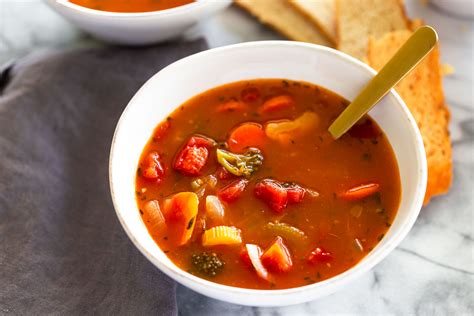The Ultimate Guide to Crafting the Perfect Soup: A Recipe for Success
Soup. The word itself conjures images of warmth, comfort, and deliciousness. Whether you're a seasoned chef or a kitchen novice, crafting a truly amazing soup is achievable with the right recipe and a little know-how. This guide will walk you through the essential elements of soup-making, providing you with a versatile recipe that can be adapted to countless flavor combinations.
Understanding the Building Blocks of a Great Soup
Before we dive into the recipe, let's explore the fundamental components that make a soup truly exceptional:
1. The Broth: The Foundation of Flavor
Your broth is the backbone of your soup. A flavorful broth elevates even the simplest ingredients. Consider using:
- Homemade Vegetable Broth: Simmer vegetable scraps (onion peels, carrot tops, celery ends) with herbs like bay leaf and thyme for a rich, savory base.
- Chicken Broth: Classic and versatile, chicken broth forms the base for many comforting soups.
- Beef Broth: Ideal for heartier soups with rich, meaty flavors.
Pro Tip: Don't be afraid to experiment with different broths and combinations to create unique flavor profiles.
2. The Aromatics: Layering Complexity
Aromatics are the secret weapons in building complex and nuanced flavors in your soup. Essential aromatics include:
- Onions: The foundation of almost any soup, onions provide a sweet and savory base.
- Garlic: Adds a pungent and savory note.
- Ginger: Offers a warm, spicy kick.
- Celery: Contributes a subtle earthiness.
- Carrots: Adds sweetness and color.
Pro Tip: Sauté your aromatics in olive oil or butter before adding other ingredients to deepen their flavors.
3. The Vegetables: Adding Substance and Texture
Vegetables add not only nutrition but also texture and visual appeal to your soup. Experiment with a variety of options, such as:
- Potatoes: Creamy and filling.
- Green beans: Adds a fresh, vibrant touch.
- Mushrooms: Earthy and umami-rich.
- Tomatoes: Adds acidity and sweetness.
- Leafy greens: Adds a touch of freshness at the end.
4. The Protein (Optional): Boosting Nutritional Value
Adding protein elevates your soup to a complete meal. Consider incorporating:
- Chicken: Classic and versatile.
- Beef: Hearty and flavorful.
- Lentils: Adds protein and fiber.
- Beans: A great source of protein and fiber.
A Versatile Soup Recipe: Your Starting Point
This recipe provides a flexible foundation that you can customize to your preferences.
Yields: 6-8 servings Prep time: 20 minutes Cook time: 45 minutes
Ingredients:
- 8 cups vegetable broth (or chicken/beef broth)
- 1 large onion, chopped
- 2 cloves garlic, minced
- 1 carrot, chopped
- 1 celery stalk, chopped
- 2 potatoes, peeled and diced
- 1 cup chopped vegetables of your choice (e.g., green beans, zucchini, mushrooms)
- 1 cup cooked protein (optional, e.g., chicken, lentils)
- Salt and pepper to taste
- Fresh herbs (e.g., parsley, thyme, basil) for garnish
Instructions:
- Sauté the aromatics: Heat a tablespoon of olive oil in a large pot over medium heat. Add the onion, garlic, carrot, and celery and cook until softened, about 5-7 minutes.
- Add the remaining ingredients: Add the potatoes, broth, and optional protein to the pot. Bring to a boil, then reduce heat and simmer for 30-40 minutes, or until the potatoes are tender.
- Add the other vegetables: Stir in the remaining vegetables (e.g., green beans, zucchini, mushrooms) and cook for another 10-15 minutes, or until tender-crisp.
- Season and serve: Season with salt and pepper to taste. Garnish with fresh herbs and serve hot.
Tips for Soup Success: Elevate Your Culinary Game
- Don't be afraid to experiment: Try different combinations of vegetables, proteins, and spices to create unique flavor profiles.
- Start with a good base: High-quality broth is essential for a delicious soup.
- Season throughout the cooking process: Adjust seasoning as needed to achieve the perfect balance of flavors.
- Simmer, don't boil: Simmering allows the flavors to meld together without scorching the ingredients.
- Blend for a creamier texture: Use an immersion blender to achieve a smooth, creamy texture.
This guide provides a solid foundation for creating delicious and satisfying soups. Remember to experiment, have fun, and enjoy the process of creating your own culinary masterpieces!
